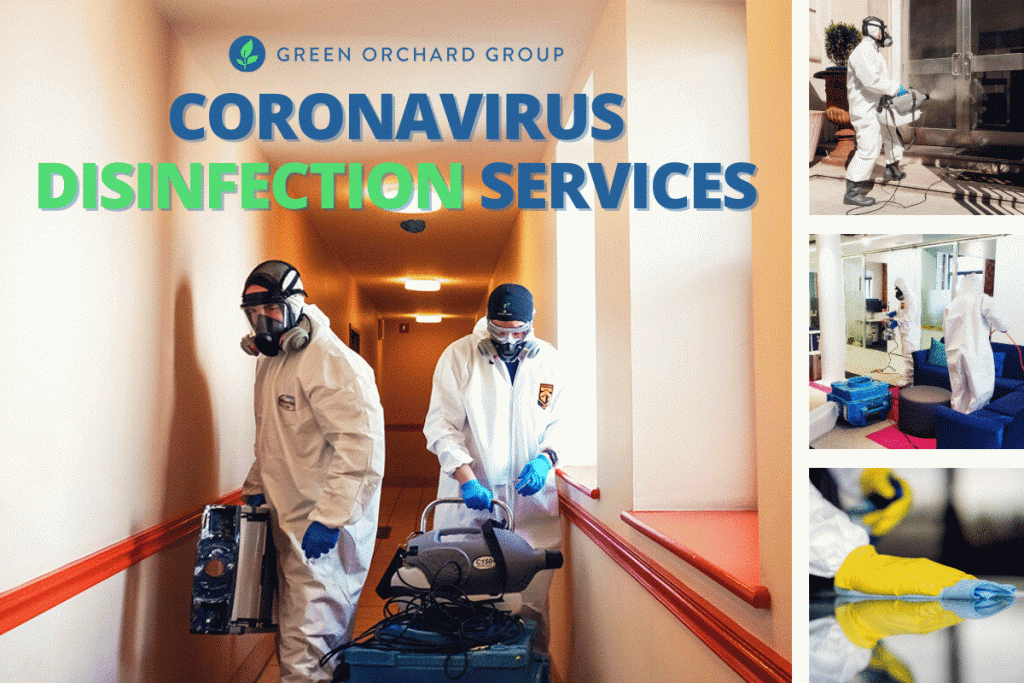With daily new coronavirus cases in New York at an all-time high, proper COVID-19 disinfecting and sanitizating is an important way to fight back against coronavirus transmission.

While the majority of transmission occurs directly from person-to-person, studies have shown that the virus can survive for hours to days on certain surfaces and in the air. That’s why the CDC and EPA recommend frequent cleaning and disinfection to help reduce the risk of spreading COVID-19 infection.
If you want to maintain a safe and healthy environment, here’s a simple 4-step checklist to help you properly disinfect and sanitize your home, office, school, or business.
Checklist: COVID-19 Disinfecting & Sanitizing (Text Only)
Step 1: Identify
- Coronavirus lives longer on certain types of surfaces. Know which types of surfaces pose a higher risk for coronavirus contamination.
- High risk: glass, steel, plastic, and ceramics
- Medium risk: wood, cardboard, and paper
- Low risk: copper, aluminum, and fabric
- Make a list of frequently-touched surfaces and common areas that need to be disinfected regularly.
- Doorknobs and handles
- Tables and countertops
- Chairs and desks
- Toilets, faucets, and sinks
- Light switches
- Elevator buttons
- Phones, keyboards, and touchscreens
Step 2: Prepare
- Use disinfectants that meet the EPA’s criteria for use against COVID-19 (check the list N tool). If not available, use one of these alternatives:
- 1/3 cup of bleach mixed with 1 gallon of water
- 70% alcohol solution
- Wear personal protective equipment (PPE) when cleaning and disinfecting.
- Gloves
- Face masks
- Gowns, aprons, or work uniforms
- Check the disinfectant label for additional PPE needs
- If someone has tested positive, close off all areas that person has been in contact with for at least 24 hours before starting.
- Open doors and windows for ventilation, especially when handling chemicals.
- Clean surfaces with soap and water prior to disinfecting.
Step 3: Disinfect
- Read and follow the instructions on the disinfectant label.
- Cover surfaces with the disinfectant solution as evenly and completely as possible.
- Most disinfectant products require you to keep the surface wet for a specific amount of time before drying.
- When possible, launder soft surfaces such as carpets, rugs, and drapes on the warmest appropriate water settings and then dry them completely.
- Place wipeable covers on electronics such as keyboards and computers and clean them with alcohol-based wipes or sprays with 70% alcohol.
Step 4: Maintain
- Establish a regular schedule for disinfecting and sanitizing.
- Frequently-touched surfaces, such as door handles, light switches, and faucets, should be disinfected at least daily.
- More frequent cleaning and disinfection may be required based on the level of use.
- HVAC recommendations:
- Use air filters with a MERV 13 rating or higher.
- Increase outside air ventilation to remove the virus via fresh air replacement.
- Ensure that areas with limited airflow have a mechanism to exhaust air.
- Maintain humidity levels at 40 to 60 percent relative humidity.
- Move or remove items to reduce frequent handling or contact from multiple people.
- Enforce social distancing and the use of face masks.
- Place disinfectant wipes and hand sanitizer in easily-accessible locations.

Need Professional Help?
Green Orchard Group provides professional COVID-19 sanitizing & disinfection services in New York City and the Tri-State Area. We follow a rigorous multi-step disinfection process that includes electrostatic fogging with EPA-approved virucides, HEPA air scrubbing, and manual wipedowns of high-touch surfaces. If you need reliable disinfection for an office or business re-opening or an emergency COVID-19 decontamination, contact us for a free quote or consultation today!



